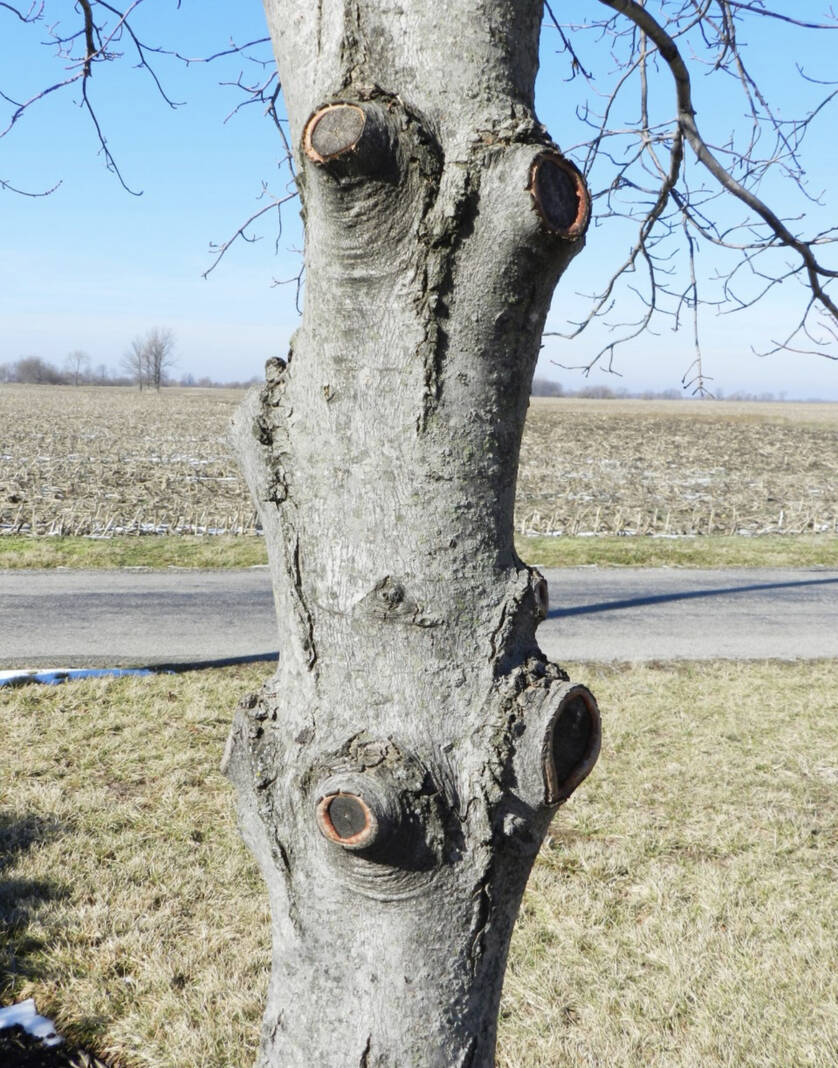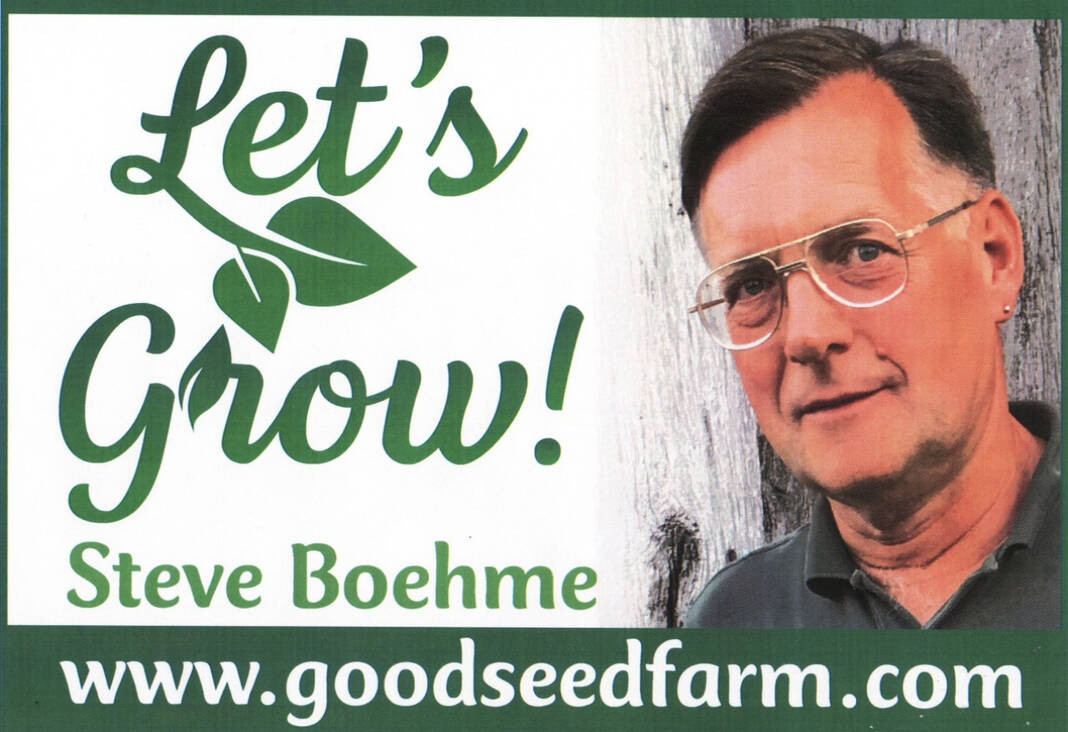
“Limbing-up” trees when young makes them more valuable.

Steve Boehme
As I drive around southwest Ohio, I pass by miles of hedgerows along fences and property lines. These are places where, because it’s difficult to cut them regularly, volunteer trees and brush are allowed to grow unchecked Blog title: Hedgerow and Woodlot Management
Most of the trees in hedgerows are “stump suckers” with multiple, competing trunks, so even if the they are desirable hardwood species, they have no value as saw lumber. Because they are entangled in fencing they are a real chore to remove.
Do you have any woods on your property? Even a fringe of trees along your property lines? If so, perhaps you should be paying more attention to them. You may not think of them as a savings account, but in many ways they can be if you take steps to manage them properly. There are simple, easy steps you can take, patiently over time, to increase the value of the trees on your property.
The first and most important step is to eliminate all but one of the competing main trunks, called “co-dominant leaders” in arborist lingo. By selecting the strongest, straightest trunk and eliminating all the others, you concentrate the tree’s energy. This vastly improves the tree structure, and makes it possible that someday the tree might be worth something as saw lumber.
“Limbing-up” volunteer trees is the next important step. By cutting off the lower limbs over time as the trees grow, you encourage them to get taller and build their main limbs higher up on the trunk. This is beneficial for many reasons. First, it provides clearance under the tree for mowing or just walking. It reduces the damage trees can do when they get entangled with fences, whether the fences are wood or wire.
The “savings account” comes into play when trees have a clear trunk, meaning the lower section has no branches. To be of any value as timber, trees must have at least eight feet of clear trunk. This minimizes the taper, so that there are more board-feet of usable wood, and less knots in the wood. It’s fairly easy to remove limbs that are low enough to reach from the ground, and the higher above ground that the trunk is clear, the more valuable the tree.
Even softwood trees like poplar, sycamore, gum and wild cherry have some value as “saw logs”. These are the trees that typically volunteer in hedgerows. Pallets, wooden crates and other disposable products don’t require fancy hardwoods to manufacture. Neither does firewood. Why allow these volunteers to grow willy-nilly, into giant weeds that cost you money to remove? Without any sort of training or pruning, otherwise useful trees can even become dangerous because of structural weaknesses.
In an unmanaged woodland, there can be intense competition among trees for light, water, and nutrients, resulting in slow growth or even the death of the more desirable trees. In a woodland under crop-tree management, the more valuable trees are freed from excessive competition by removing some of the less desirable competing trees. The remaining trees grow faster, are healthier and more vigorous, more insect and disease resistant, and perhaps someday more valuable as marketable timber.
In a single afternoon, you and your chainsaw can have a huge impact on the value of volunteer trees on your property. Why not devote a few hours each year to this investment? Over years of time, this practice will reward you with the kind of woodlands we all like best; tall, straight, healthy timber that’s not choked with vines or held back by weak, crooked trees of no particular value.
Think of the trees on your property as a savings account; each tree like a 30-year savings bond. If you take proper care, patiently over time, it will grow in value, and at the same time be deeply satisfying to you as a landowner.
Steve Boehme is a landscape designer/installer specializing in landscape “makeovers”. “Let’s Grow” is published weekly; column archives are online at www.goodseedfarm.com. For more information call GoodSeed Farm Landscapes at (937) 587-7021.

